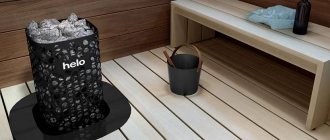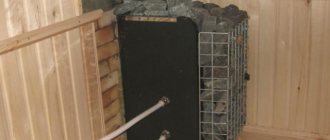Date of publication: June 17, 2020
Nowadays, stove and fireplace heating is one of the most effective and affordable solutions for heating cottages and country houses. After all, not everywhere in suburban conditions it is possible to connect to a gas main in order to organize gas heating. And types of fuel such as diesel, diesel fuel and especially electricity are often not economically profitable if it is necessary to heat the house on an ongoing basis.
Wood heating confidently holds a leading position in the suburban sector, because, in addition to warmth, it also brings comfort and a special atmosphere to the house, gathering entire families around a fireplace with burning wood.
In order for wood heating to be as efficient, long-lasting and economical as possible, it is important to choose the right stove for your home. A balanced selection of a model that will optimally combine all the required parameters for the specific tasks of a particular home will allow you to invest your money wisely and significantly increase the level of comfort of life.
When is it profitable to burn with wood?
It’s good when there is a gas main within reach of a country house. In this case, the question of choice does not arise for most owners; If wood heating is present, it is for comfort, in the form of a fireplace or a small decorative stove. If there is nothing to connect to and the house is large, the best choice would be a solid or liquid fuel boiler, since electric heating will cost much more and can only be considered as an additional (backup) option.
It’s another matter if the country house is small in area. For a building with two or three rooms and a kitchen, the number of heating methods is greater, but the most common is still the use of wood. In country cottages, wood heating is beneficial in the following cases:
- Seasonality of residence. Heating with wood is especially beneficial if people do not live in the house permanently, but use it for seasonal recreation. Even if there is a gas main nearby, it is not always cost-effective to carry gas.
Wall-mounted method of arranging a modern wood-burning stove for heating a house Source kamine-streubel.de
- Availability of fuel. If there are no problems with the procurement of firewood in the area, heating with wood will be the most economical way for a house of any size.
- Modern design. For a small house, a modern, economical wood-burning stove and well-designed heating will be the best solution.
The total area of the house and the footage of specific rooms requiring heating
The total footage of the building and the premises to which heat is required are fundamental when choosing furnace equipment. Based on the footage, the power of the product is selected. You can calculate the required power using a simple scheme: 1 kW of power is intended to heat an average of 10 square meters of space. It is worth noting that 10 square meters of room will be heated by 1 kW of stove power if the entire house has a good level of insulation. If the building is poorly insulated and is characterized by heat loss, you should choose a higher power fireplace.
Advice. You can most accurately select the required power taking into account the characteristics of the building with the help of a specialist who can correctly identify all the factors influencing this aspect.
Choosing the right thermal power is very important, since its lack will lead to poor heating levels, and excess power will create an unfavorable microclimate in the house and excessive load on the hearth, which can lead to its early breakdown.
Wise choice: what to look for
At different times in different countries there were many types of wood heating appliances. They differed in appearance, had different design features and purposes. Modern stoves for heating a home using wood can be classified in different ways:
- By appointment. Stoves can be heating, heating-cooking (then they have a hob and/or oven), special purpose (for example, for a sauna, greenhouse or garage).
- By brand. Models of both Russian and foreign production are available for sale. Among the latter are stoves from Poland, Canada, Sweden, France, Serbia, the Czech Republic and Belgium.
Hanging drop fireplace with a rotating firebox in hi-tech style Source pinterest.co.uk
- To size. Dimensions and weight can sometimes be critical.
- By location. It can be wall-mounted, corner, universal or island.
- According to the location and parameters of the chimney. Chimneys have different diameters and are located at the top, rear or top/rear.
- According to the material. The body is made of cast iron, steel, stone, brick, ceramics, tile (tile).
- According to the firebox material. The firebox is made of steel, cast iron, fireclay, vermiculite or ceramics.
- In terms of performance. The models are designed for different volumes (areas) of the heated room and have different thermal power (indicated in kW) and efficiency (from 50 to 95%).
- According to design features. There are models on the market with a fire-resistant glass or solid door, or with a water circuit (heat exchanger).
A brick heating and cooking stove conveys the atmosphere of country life. Source yandex.ru
When purchasing a wood-burning stove, pay attention to the defining parameters:
- Wall and firebox material. It is better if the stove is made of heat-resistant high-alloy steel, cast iron or black boiler steel. The walls of high-quality products are made thick (sometimes up to 8 mm) or lined with fireclay bricks.
- Economical. Long-burning designs (with a special firebox design and high efficiency) are on sale; Firewood is placed in them every 4-8 hours.
- Purpose. When choosing one design or another, you must remember that a free-standing stove will only heat the room in which it is installed; a wall-mounted stove will also heat adjacent ones (with a common wall). The sauna stove is equipped with a steam generator (a container for filling stones).
Design diagram with a long-burning water circuit Source xazovum.gezilam.ru.net
See also: Catalog of companies that specialize in insulating country houses.
Products for conventional heating systems
A traditional heating device used to heat one or a maximum of two rooms is suitable for small guest houses or compact summer cottages.
As a rule, such stoves are designed to heat one room, and if installed in a niche or opening between rooms, then for two. Such products usually provide outlets for convection air, which is emitted in all directions from the fireplace. Or heating can be based on simple heat radiation from the heated body. The use of such devices in large houses is also appropriate as an additional source of warmth and comfort, provided that the main heating functions are performed by a boiler or fireplace in a wide range of configurations.
Basic requirements for wood stoves
A properly selected stove must fulfill several conditions:
- Strength. The service life depends on the material and can range from 20 to 50 years (depending on the quality of workmanship and intensity of use).
- Economy. Economical fuel consumption is one of the priorities of choice.
- Compactness. An important parameter in a small house.
- Efficiency. Ideally, the stove should not only quickly warm up the house, but also maintain a comfortable temperature throughout the day.
- Safety. The stove, as a source of open flame, is subject to special fire safety requirements. The surface should not warm up above 90-95°C.
- Aesthetics. It’s great if the appearance of the stove complements and emphasizes the overall design of the house.
Fireplace stove with hob, Poland Source en.aviarydecor.com
Selecting a model based on the configuration of technological systems and solutions
The thermal characteristics of any fireplace are based, among other things, on the inclusion of modern solutions that are designed to enhance the thermal capacity of the product. Such systems include:
- Convection system
- Flue gas afterburning system
- Long burning
- Clean glass system
- Multi-level air supply
- Patented combustion and particle capture systems
The systems described above are designed to optimize the process of burning wood, but to reduce fuel consumption, as well as extend the heating time and, accordingly, the emission of thermal energy. For example, the long-burning option allows you to switch the stove to an economical but effective mode - after the active phase of wood combustion. This mode is capable of maintaining the generation of thermal energy for several hours without adding a new portion of fuel. Another system, the afterburning of flue gases, operates on the basis of the cleanest possible combustion of not only firewood, but also smoke particles: the energy from their combustion also goes to heating purposes, enhancing heating processes and saving fuel.
In addition to modern equipment, furnace equipment is equipped with basic and additional functional elements. Let's list all the possibilities:
- Grate
- Ash box
- Door with viewing glass
- Opening handle
- Drovnik
- Hob
- Oven
- Adjustment levers: control of air flows, change of heating modes
Types of wood stoves
Currently, there are many types of wood stoves, the most common of which are:
- Traditional. They are built from brick or stone, and are considered not only durable, but also safe. These include the Russian stove, the Swedish stove, and the Dutch stove. Such structures heat the room slowly, but they also retain heat much longer than metal ones. Today there are practically no craftsmen left who know how to build a high-quality warm stove, and you also need to know how to use it. Therefore, they are rarely staged, mainly by adherents of antiquity or exoticism.
- Fireplace s. A classic fireplace is an open hearth that looks great in any setting. Spending an evening near it, watching the flames, is highly romantic, but not practical. A traditional fireplace does not cope well with high-quality heating of the room, but a modern fireplace stove does this much more efficiently.
Modern stove-fireplace made of cast iron Source otopleniehouse.ru
- Metal. In modern conditions, metal wood-burning home stoves are the most common option due to their low cost and ease of maintenance. They belong to the category of rapidly heating structures; The air temperature in the room rises within half an hour, but the wood burns out quickly.
- Furnaces with a water circuit. A water circuit is built into the furnace structure - a container with water and a pipe system connected to batteries. The heated gases give off heat to the water, which carries heat throughout the house. Such stoves are convenient because they can be installed anywhere in the house (where it is more convenient to build a chimney).
- Gas generators. Such designs are called long-burning furnaces. They are distinguished by compactness, high efficiency (from 80%) and a special design. The firebox consists of two chambers; In the first chamber, wood is burned, in the second, pyrolysis gas is accumulated and burned. There are several varieties on sale, including Buleryan, Professor Butakov’s stove, and Stropuva’s stove.
Manufacturing materials
The materials from which the hearth is made have a great influence on heating processes and heat generation. Many types of materials have the ability to accumulate heat and radiate it into the surrounding space, which is actively used by manufacturers of heat-generating equipment.
The following types of materials are used in the manufacture of furnace equipment:
- Cast iron
- Steel
- Boiler steel
- Ceramics
- Brick
- Chamotte
- Composite materials
- Tiles
- Soapstone chlorite
The body and main structural parts of the furnaces are made of metal, boiler steel and cast iron. The characteristics of steel and metal include the ability to heat up quickly, but also cool down quickly. Therefore, steel models are usually supplemented with a protective and heat-accumulating lining of the combustion chamber. Cast iron is distinguished as a powerful heat-accumulating material - yes, it takes a long time to heat up, but then it is capable of radiating thermal energy into the surrounding space for a long time.
Brick, fireclay, composite materials are usually used for lining the internal parts of the combustion chamber to enhance combustion processes, reflect heat from the walls of the firebox, increase the temperature level, fuel combustion efficiency and, as a result, enhance the heat generation process.
Ceramics and soapstone can also be used for lining the firebox, but are more often used for lining the outer body of stoves, along with tiles. These materials are characterized by the ability to accumulate heat and subsequently release it into the room, which enhances the overall thermal performance of the equipment. Cast iron and steel are also often used as body cladding.
Design and rules for placing the stove
Despite the variety of designs, all wood stoves produce energy to heat the air by burning wood. Therefore, they all consist of the same set of elements, which include:
- Firebox. Place where wood is burned, chamber made of heat-resistant materials.
- Grate (grid). Metal grate at the base of the firebox. Firewood is placed on it, air enters the firebox through it and ash is removed.
- Ash pan. A small chamber under the firebox where ash accumulates.
- Chimney. A pipe through which combustion gases are removed.
- Smoke damper. Blocks the chimney to retain heat.
Safe placement of an iron stove for a wood-burning home on a fireproof glass stand Source monitoruldevrancea.ro
Selection by shape, installation method and design
Perhaps the most creative part of the hearth selection process is studying its shape and design. Modern manufacturers are developing a wide variety of design solutions for furnaces. The most common of them:
- Rectangular
- Square
- Rounded
- Cylindrical
- Triangular
- On a leg
- Rotating
- On the banquette
Stylish solutions for stoves offer options from all known trends, from classic, retro-stove stoves and modern, to ultra-modern, high-tech, minimalistic and futuristic designs. You can often find cladding decorated with ornaments, drawings, and artistic elements. In turn, the shape of the stove affects the method of its installation - against the wall, in a corner, in the center of the room. And the style design is designed to help users choose the design of the product that will harmoniously complement the existing or planned interior of the room and home.
Important! Installation, installation and connection of heat generating equipment must be carried out by specialists. Only professional installation can guarantee fire, technical and operational safety of both the equipment itself and the building. Experts strongly do not recommend doing the installation yourself.
Advantages and disadvantages
Using a wood-burning stove for home and garden (the modern version) in many cases has significant advantages:
- Easy to install and operate.
- Efficiency and economy. A high level of efficiency and careful consumption of firewood is ensured by various technological methods, from the shape of the exhaust pipe to the long-term burning mode.
- Quick effect of work. The heat from a working stove spreads quickly, a comfortable temperature is established within half an hour.
- Compactness. This quality is especially valuable in small country houses. Such a heating device can be installed in any room (if there is a chimney).
Basic criteria for choosing a heating device
When choosing a suitable heating unit, it is important to take into account the characteristics and parameters of the house and premises that require heating. The efficiency of the entire heating process, fuel consumption and quality of emitted heat will depend on correctly taken into account space parameters. In this context, the main factors to be taken into account relate both to the heater itself and to the room or rooms to which heat is required. Let's list them:
- Total building area
- Number of rooms requiring heating
- Footage and layout of rooms requiring heating
- Ceiling height
- Insulation of the house
- Number of floors
- Mode of residence in the house (permanent, seasonal)
- Desired location for the fireplace
- Preferred type of heating system (conventional, water, air, combined)
- Presence/absence of need for hot water
- Availability/absence of cooking facilities
- Nominal and actual power of the fireplace and efficiency level
- Purpose of the focus: main or additional
- Interior space solution
- Chimney outlet location
Attention! Operation of a heating stove is only permissible in conjunction with a chimney through which smoke, combustion products and carbon monoxide are discharged to the street. Using a wood-burning fireplace without a chimney is extremely dangerous to life, health, and the safety of property.
Video description
About the stove after two years of use in the following video:
- Multifunctionality. Modern models delight with thoughtful functionality. There are options that can switch to another fuel (coal or wood waste). Many models can be used not only for heating, but also for cooking or heating water.
- Safety. Properly installed (according to SNiP rules) stoves comply with all safety standards, regardless of design and material of manufacture. Many units have the ability to regulate the combustion or afterburning of gases.
- Appearance. A wood-burning stove can become a decoration for your home. Manufacturers offer options for interiors decorated in any style. You can purchase a model in a modern, strict and rational design, or in a national design, using spectacular details (even hand-painted tiles).
Tiles resistant to high temperatures Source versace-promo.ru
Selecting a stove based on thermal characteristics
Having decided on the preferred type of heating and the power of the fireplace, you should take into account other characteristics that affect its heat transfer and efficiency. These characteristics include:
- Case materials
- Cladding materials
- Firebox lining
- Door and firebox sealing
- Equipped with long-term combustion and afterburning flue gas systems
Wood stove prices
The secret to the popularity of wood-burning stoves lies in their wide capabilities and variety of offerings. On the market you can find both budget compact options and luxurious units that can decorate the most sophisticated interior. No matter how charming a stove may be, constantly throwing firewood into the firebox is a boring task, which is why more and more owners of country cottages prefer long-burning stoves.
A modern version of a traditional way of heating a home Source savoie-mont-blanc.com
If you look at average prices (in the Moscow region), they will look like this:
- Metal stoves. Heating: 5-16 thousand rubles. (depending on design). Heating and cooking: 9-35 thousand rubles. (domestic and imported). Stove-fireplace: 20-40 thousand rubles. (may have a stove and heat exchanger).
- Cast iron: From 20 to 120 thousand rubles, depending on the size and design.
- Stoves lined with tiles (tiles): 50-80 thousand rubles.
- Stone (from granite to Brazilian sandstone): 60-200 thousand rubles.
- With a water circuit: 20-55 thousand rubles.
- Long-burning stoves: 15-45 thousand rubles.
- Potbelly stove: 9-16 thousand rubles.
The widest selection of furnace and accompanying equipment
sells a wide range of furnaces of all existing equipment options, configurations, power, configuration, materials, dimensions, design. The lineup is represented by products from the world's leading manufacturers in a wide range of prices. In the company's showrooms you will find a range of products from budget stoves for a summer house at the cost of a smartphone, to elegant palace stoves SERGIO LEONI for creating expensive interior solutions.
In addition to the products themselves, it provides a full range of services for ordering, delivery, installation and connection, commissioning and servicing of heating devices. All products and services come with guarantees of quality and long service life.
The location of the stove or design features of the steam room
Pay special attention to one point: where the stove will be fired from. And it can be heated either from the steam room itself, or from the dressing room, washing room, locker room, rest room, etc. Such stoves are called “remote” or with a remote fuel channel.
Where to heat from is a matter of your taste. If you want to heat the stove without leaving the steam room, then choose a stove model without an external firebox. But if you don’t want to, and if the design of the bathhouse allows you to heat the stove from the adjacent room, then choose a stove with a remote firebox.
As you consider what is best for you, be sure to consider the following. “Takeaway” stoves retain oxygen in the steam room, as they take it for combustion from another room. But at the same time, you will have to run out of the steam room from time to time to check the condition of the firebox and the amount of firewood. And, of course, while you open and close the door, the heat will leave the steam room.
Let us also note the difficulty of installing a stove with a remote firebox compared to stoves without a remote firebox. But this cannot be called a serious disadvantage. If you have the hands and expert advice, then anything is possible. As the authors of the article, we recommend that you contact our specialists and order not only a suitable stove, but also an installation service.
By the way, we do not recommend placing the firebox outside! Call us and we’ll explain why: 8 (812) 605-85-05.
Fig 1. Oven Vesuvius Legend “without removal” (left and center) and Vesuvius Legend “with removal” (right)
Which oven is preferable: summing up
From the above we can conclude that a different oven model is suitable for each specific case. If you need an efficient device for heating a large house, then cast iron construction will be the best choice. For periodic use, it is rational to give preference to inexpensive steel models. If there is no place to store fuel, then take a closer look at gas stoves. For long hours of work, devices with a long-burning firebox are better suited. Aesthetics are important - then lined stoves and fireplace stoves can be a good option. Therefore, which oven is better in your case is up to you to decide.
Stove doors: if you want to admire the fire, consider the nuance
Everything is simple here. The door of a wood stove can be solid or glass. Of course, the glass door will allow you to enjoy the view of a live fire and at the same time control the availability of firewood in the stove. It is important to consider the following: if you have a stove without an extension, and the steam room is small, then the glass door can burn your feet with infrared radiation from the firebox of the stove. In this case, we recommend that you refuse this “bonus” and give preference to solid doors.
By the way, there is a story that through a glass door it will be possible to partially heat the room into which it opens. It is a myth. Of course, the door will transfer heat into the room, but it is so insignificant that it can be ignored.
Is an electric stove suitable for a Russian bath?
We have already said that the traditions of the Russian bath are not yet forgotten in our country, so it is quite reasonable to ask whether it is possible to take a normal steam bath with an electric sauna heater?
Traditionalists , as a matter of course, will say that no, this is impossible . In fact, electric stoves were invented for saunas. And what they do best is maintain the Finnish bath mode, that is, dry the air and heat it to very high temperatures using high convection.
In a real Russian bath, the temperature should be lower and the humidity should be higher, and the humidity should come from good, light steam obtained from overheated stones. And those stones that lie in the open heater of the sauna stove cannot heat up to the required temperatures . If the stove is also electric, then it must be protected from excess water, which can damage the heating elements - heating elements located between the stones.
The photo shows heating elements for electric heaters, red-hot.
The problem of steam generation in a bathhouse with an electric heater is usually solved with the help of a steam generator - built-in or separate. We recommend that you read the article that examines this issue in detail. Here we will say that there are different types of steam generators - some produce heavy white steam, which has nothing in common with that needed in a Russian steam room, others cope well with the task of creating finely dispersed steam - you need to find out about this at the purchase stage.
CONCLUSION! So, using an electric oven to create the conditions of a Russian bathhouse to the fullest extent is impossible, but with a good steam generator it will still be possible to steam, the main thing is to keep the temperature around 65 degrees and give more steam.
It remains to be seen which models of electric stoves for Russian baths are best suited for the task.
Components of mini-ovens
Standard stoves consist of the following parts:
- The glass door is made of heat-resistant glass with additional thermal insulation;
- The internal coating of the stove is necessary to preserve its functionality for a long time and simplify the maintenance of the device;
- The built-in convection function allows you to evenly distribute heat in the oven;
- Guides on the grates are necessary for installing a baking sheet with a dish;
- At the bottom of the device there is a tray that protects the heating element from crumbs and grease;
- Baking trays of various depths are sold complete with the mini-oven;
- Spit for grilling;
- Removable top cover, thanks to which you can turn the oven into a real barbecue.
Review of the best models
After reading the information on forums and customer reviews, we can identify several popular models of stoves for bathhouses:
- Vesuvius Legend. Suitable for heating steam rooms with a volume of 14–24 cubic meters. The maximum heating temperature of the stones is 500 degrees. With this heating, you can easily obtain dry steam. The average price is 25,000 rubles.
- Zharnitsa. Made from structural steel. It has a water tank, which is located close to the firebox. Tank capacity - 45 liters. The average price is 14,700 rubles.
- Skif standard. Suitable for heating a steam room with a volume of 14 cubic meters. The fuel combustion chamber is made of structural steel. The average price is 12,500 rubles.
- Optimal standard. Suitable for heating rooms with a volume of 6–14 cubic meters. The door and grate are cast iron. The average price is 9600 rubles.
- Rusich Anthracite. Suitable for heating steam rooms with a volume of up to 14 cubic meters. With its help, you can choose the Russian or Finnish bath mode. The average price is 14,000 rubles.
- Lava 22. Used in steam rooms with a volume of 12–24 cubic meters. The combustion chamber is made of structural steel. The average price is 15,700 rubles.
- Lava 12. Used for heating steam rooms with a volume of 6–14 cubic meters. It works in two modes - classic Russian bath, Finnish sauna. The average price is 13,500 rubles.
- Karelia 5. A classic stove, which is heated from the steam room, which creates some inconvenience. Can heat a steam room with a volume of up to 20 cubic meters. The average price is 30,000 rubles.











